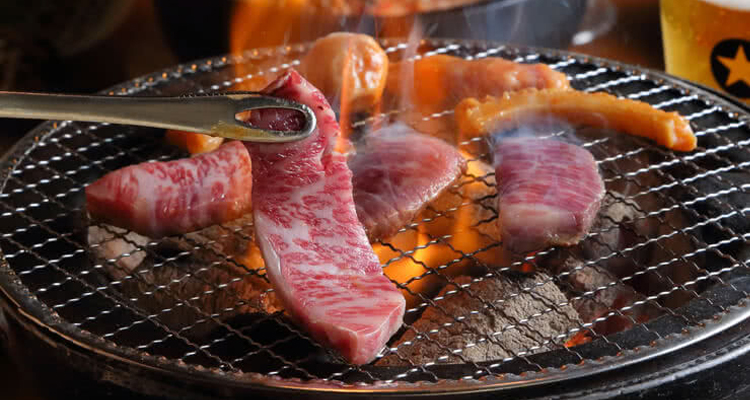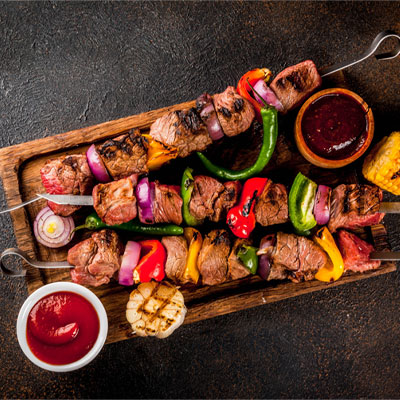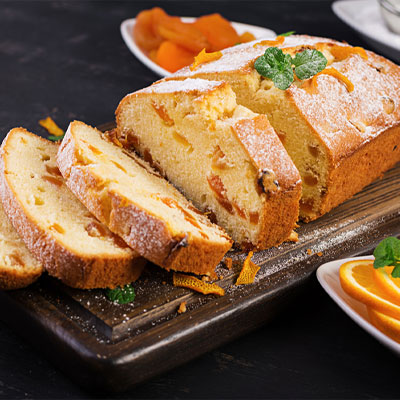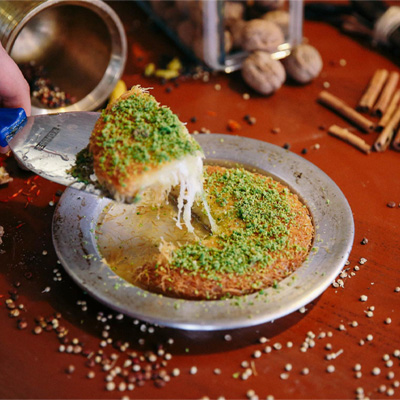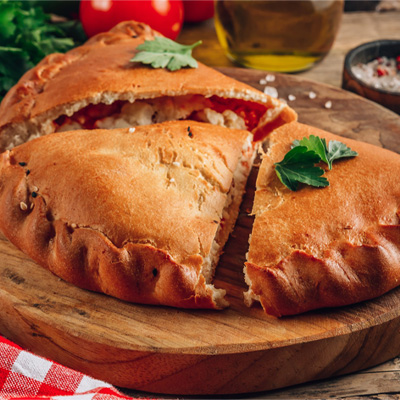Yakiniku, a beloved culinary tradition in Japan, is a dining experience that tantalizes the senses and brings people together over the joy of grilling and savoring delectable pieces of meat. With origins tracing back to Korean barbecue, yakiniku has evolved into a distinct Japanese gastronomic delight. In this article, we'll explore the essence of yakiniku, its history, preparation, and the cultural significance it holds within Japan and beyond.
Nutrition Facts
- Kcal
300 - Fat
15 g - Choles
60 mg - Sodium
950 mg - Carbs
12 g - Fiber
1 g - Sugar
8 g - Protein
26 g
Note: The nutrition facts are approximate values and may vary based on the specific ingredients used and any additional toppings or syrups added.
Ingredients
- 1 pound (450g) thinly sliced beef (such as ribeye, sirloin, or short ribs)
- Marinade (combine the following):
- 1/4 cup soy sauce
- 2 tablespoons mirin (Japanese sweet rice wine)
- 2 tablespoons sake (Japanese rice wine)
- 2 tablespoons sugar
- 2 cloves garlic, minced
- 1 teaspoon grated fresh ginger
Assorted vegetables for grilling (bell peppers, mushrooms, zucchini, etc.)
Steamed rice, for serving
Dipping Sauce (Tare)
- 1/4 cup soy sauce
- 2 tablespoons sake (Japanese rice wine)
- 1 tablespoon mirin
- 1 tablespoon sugar
- 1 green onion, finely chopped
Directions
In a bowl, whisk together all the marinade ingredients until the sugar dissolves.
Place the thinly sliced beef in a resealable plastic bag or a shallow dish. Pour the marinade over the beef, ensuring each slice is coated. Seal the bag or cover the dish and marinate in the refrigerator for 1-2 hours (if time allows).
Preheat a grill or grill pan over medium-high heat.
While the grill is heating, prepare the dipping sauce (tare) by combining all the dipping sauce ingredients in a small bowl. Set aside.
Thread the marinated beef slices onto skewers, shaking off excess marinade.
Grill the beef skewers for about 1-2 minutes on each side, or until they are cooked to your desired level of doneness.
As the beef cooks, grill the assorted vegetables until they are slightly charred and tender.
Once cooked, remove the beef and vegetables from the grill and arrange them on a serving platter.
Serve the Yakiniku with steamed rice and the dipping sauce (tare) on the side.
To eat, dip the grilled meat and vegetables into the dipping sauce before taking a bite. Enjoy the delicious flavors!
Note: Yakiniku is often enjoyed as a communal dining experience, where everyone grills their own meat and vegetables at the table. Customize the recipe by using your favorite meats and vegetables.
The Essence of Yakiniku
Yakiniku, which translates to "grilled meat" in Japanese, is more than just a meal—it's an interactive and communal culinary event. The heart of yakiniku lies in the art of grilling bite-sized pieces of meat, typically beef, pork, or chicken, at the table. The meat is often marinated or seasoned with a variety of flavorful sauces and then cooked to perfection on a grill. The result is a symphony of sizzling sounds, mouthwatering aromas, and the anticipation of enjoying each succulent bite.
A Brief History
Yakiniku's roots can be traced back to Korea, where the tradition of grilling meat, known as "gogi-gui," has been practiced for centuries. The concept made its way to Japan in the early 20th century, gaining popularity over time. While yakiniku retains its Korean influence, it has undergone a unique evolution in Japan, with the introduction of high-quality domestic beef and distinct seasonings.
The Yakiniku Experience
Participating in a yakiniku feast is not just about indulging in grilled meat; it's a social and sensory experience that brings people together. Here's how a typical yakiniku dining experience unfolds:
-
Selecting the Cuts
Upon entering a yakiniku restaurant, guests are presented with a menu featuring an array of meat cuts, each with its own unique flavor and texture. From tender ribeye to marbled Wagyu beef, there's a cut to suit every palate.
-
Grilling at the Table
Once the selections are made, a tabletop grill is brought to the table, and the real fun begins. Guests take turns grilling the meat to their desired level of doneness. The grill's smoky aroma fills the air, enhancing the anticipation of the upcoming feast.
-
Dipping and Savoring
As the meat cooks, diners often have a variety of dipping sauces at their disposal. These sauces range from savory to sweet and tangy, adding layers of flavor to each bite. The art lies in knowing when to dip the meat and how much sauce to use.
-
Sharing and Bonding
Yakiniku is inherently a communal experience. Diners share stories, laughter, and culinary tips as they cook and enjoy their meal together. The process fosters a sense of connection and camaraderie, making yakiniku not only a feast for the palate but also for the soul.
Beyond the Meat: Accompaniments and Side Dishes
While meat is the star of the show, yakiniku meals are often accompanied by a variety of side dishes that complement and balance the flavors. These may include crisp vegetables, kimchi, rice, and refreshing salads. The interplay of different textures and tastes adds depth to the dining experience.
Yakiniku and Culture
Yakiniku holds a special place in Japanese culture, serving as a gathering activity that transcends generations. Families, friends, and colleagues come together to celebrate special occasions or simply enjoy a leisurely meal. The ritual of grilling meat at the table is a cherished tradition that fosters a sense of togetherness and appreciation for the finer things in life.
FAQs about Yakiniku
Is yakiniku only about beef?
A: While beef is a popular choice, yakiniku encompasses various meats, including pork, chicken, and seafood.
Can I enjoy yakiniku as a vegetarian?
A: While yakiniku is centered around grilled meat, some yakiniku restaurants offer vegetarian options such as grilled vegetables and tofu.
What's the best way to grill meat for yakiniku?
A: Each meat cut has an optimal grilling time to achieve the desired level of doneness. Experimentation and experience will help you master the art of grilling yakiniku-style.
Is yakiniku considered a formal or casual dining experience?
A: Yakiniku can be enjoyed in both formal and casual settings. Some restaurants offer upscale dining experiences, while others provide a more relaxed atmosphere.
Conclusion
Yakiniku is more than just a meal—it's a celebration of flavors, culture, and connection. The art of grilling meat at the table, the aroma of sizzling delicacies, and the shared experience make yakiniku a cherished tradition in Japan and a delightful culinary adventure for anyone fortunate enough to partake. Whether you're a seasoned enthusiast or new to the world of yakiniku, the journey of savoring each tender bite is an unforgettable exploration of taste and togetherness.
